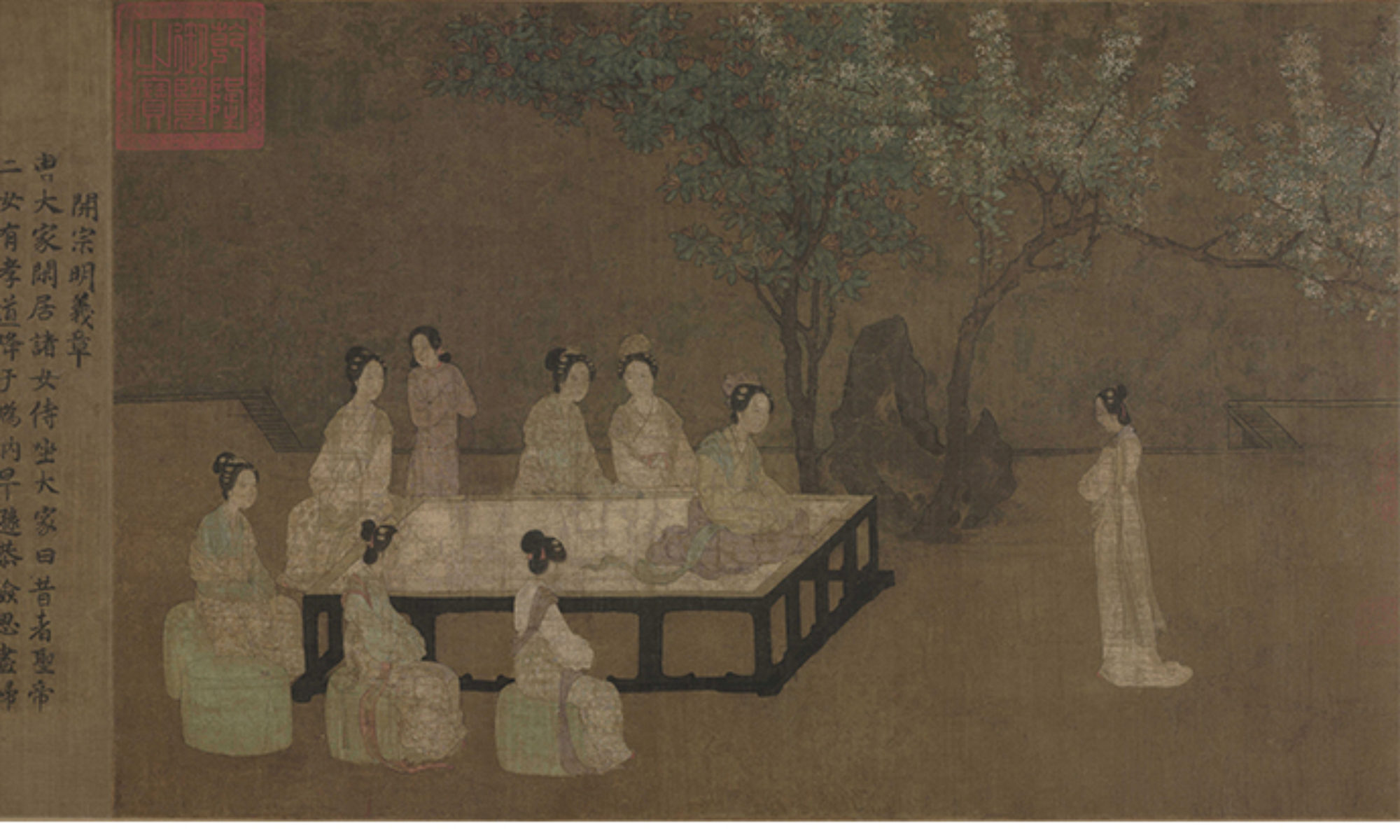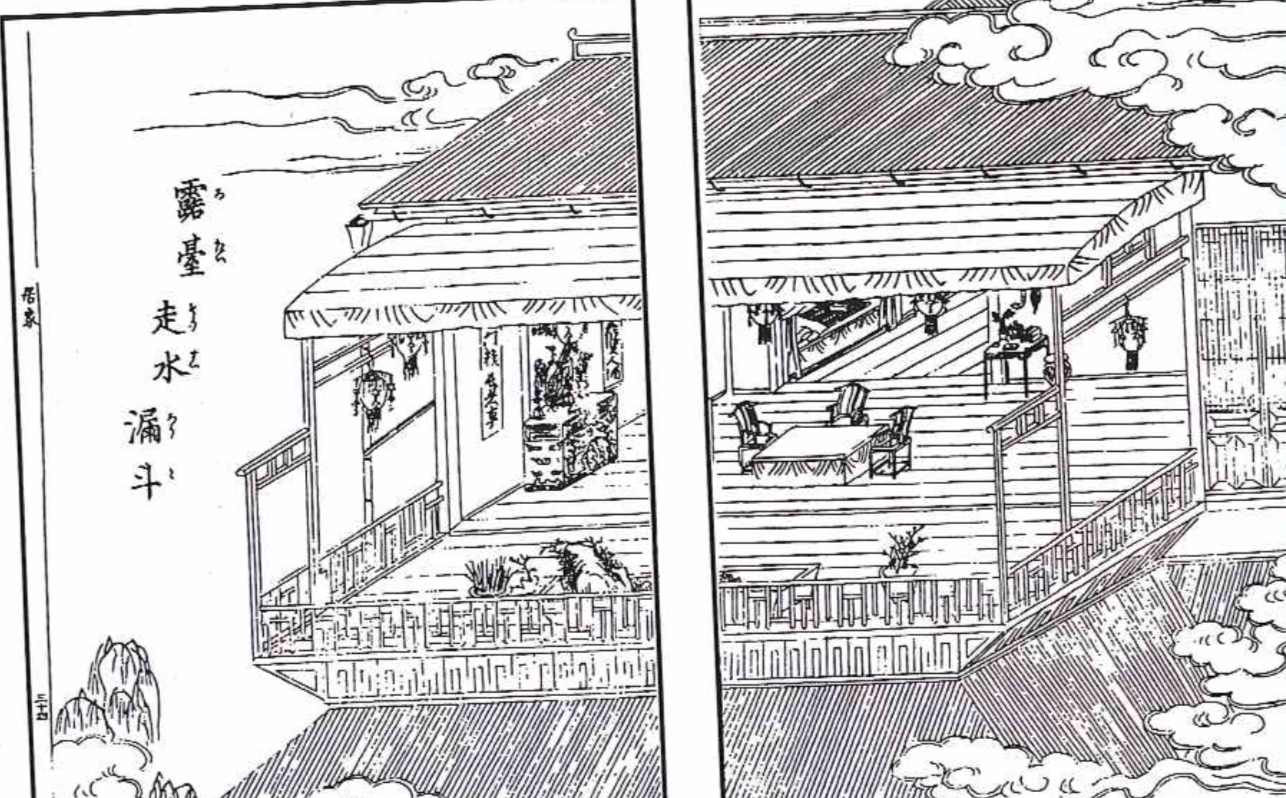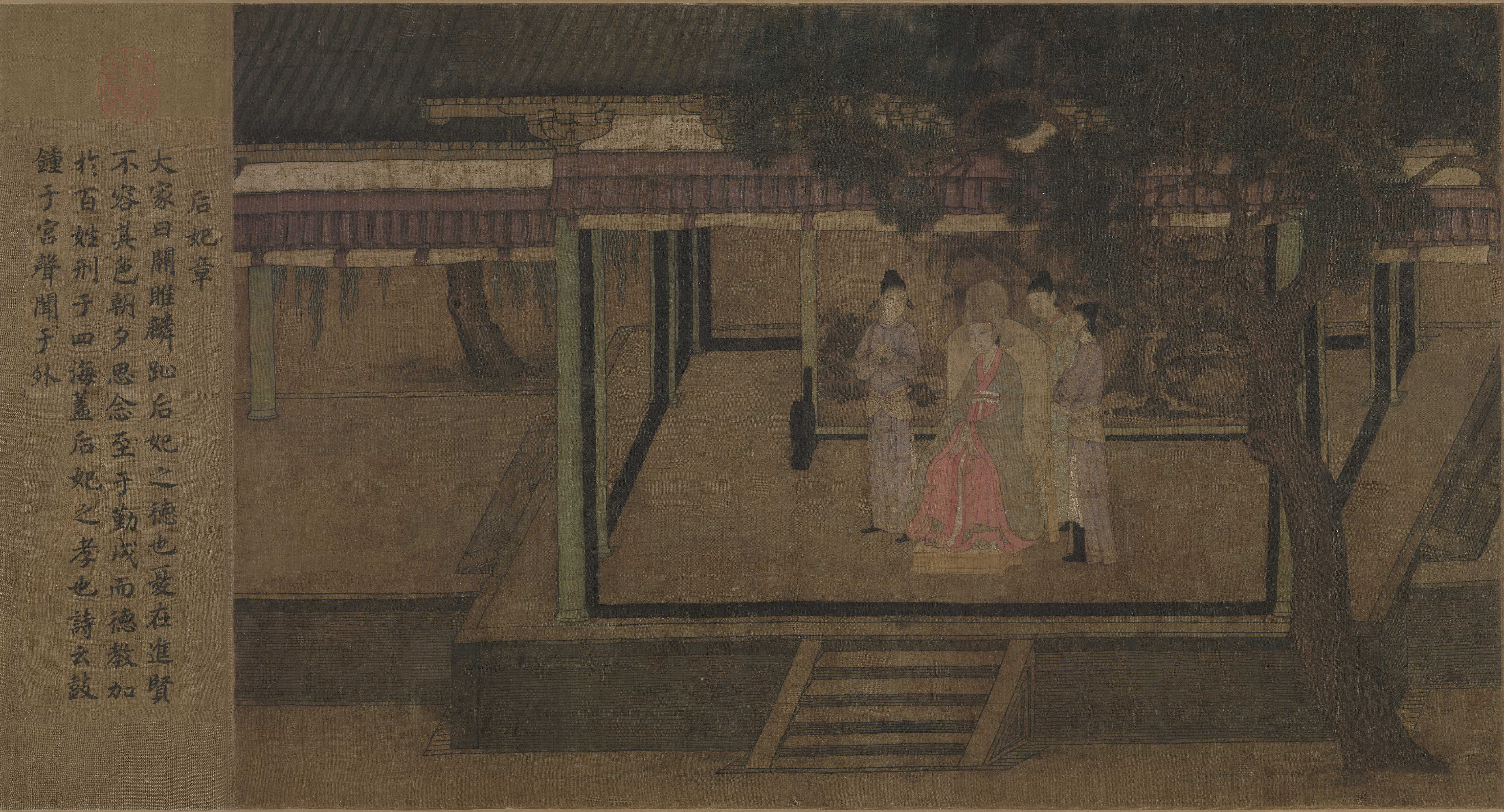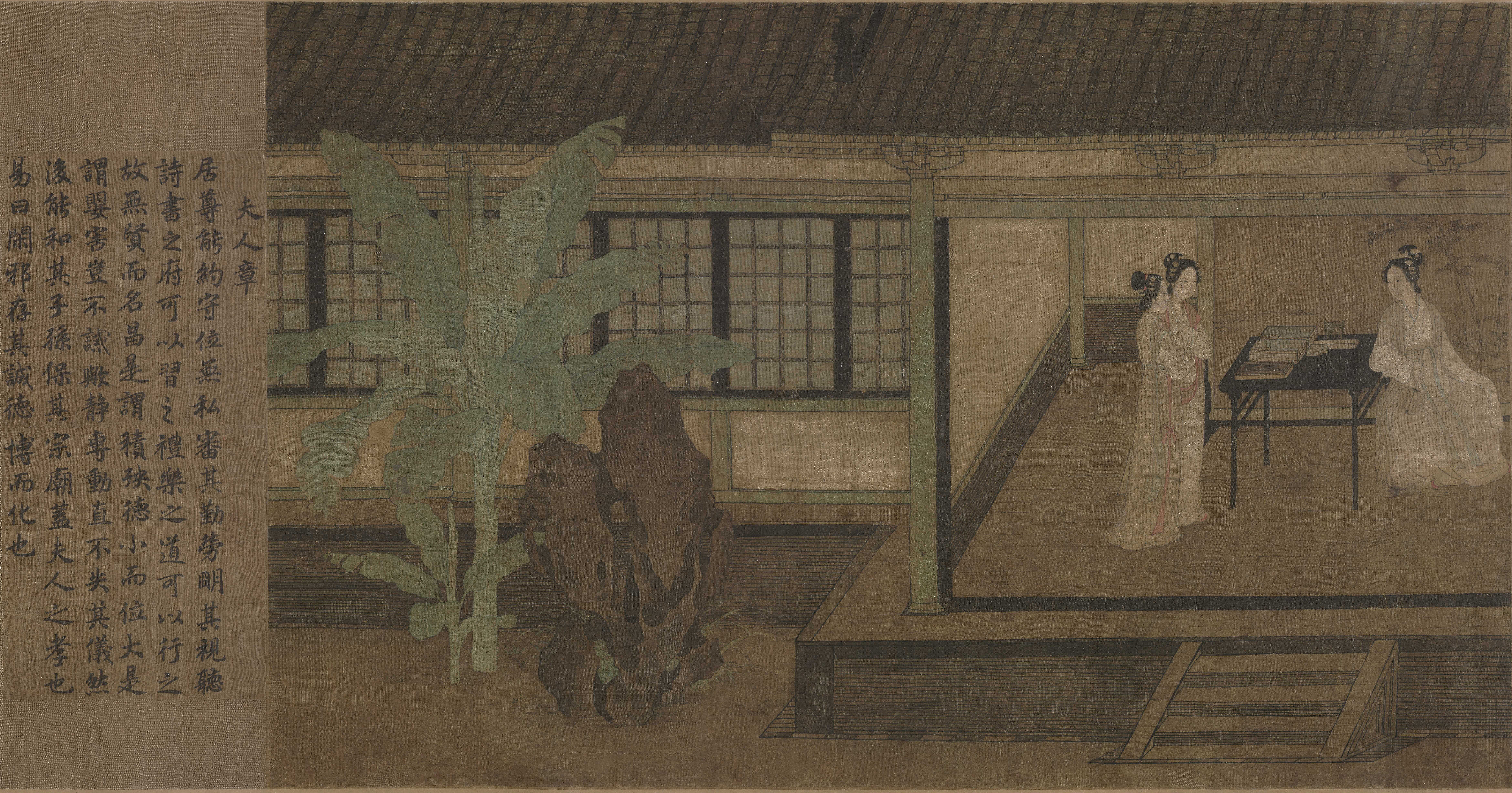The notion of “Inner and outer” (nei-wai) is the polarity refining gender ethics in the Warring States and Han Dynasty. The phrase Nei-Wai defines the idea of “ the separation of men and women” (nan nü zhi bie 男女之别). Women were assigned to the inside, nei, and men to the outside, wai. Men were in charge of all affairs on the outside; women managed the inside affairs. This notion was supported by the Five Classics, especially the Book of Changes (Yi Jing), the Book of Odes (Shi Jing), and the Book of Rites (Li Ji.) According to the latter, “Male and female should not sit together, not have the same stand for clothes, nor use the same towel and comb, nor let their hands touch in giving and receiving. A sister-in-law and brother-in-law cannot interchange inquiries. The confines of outside and inner quarters help safeguard against the threats or danger of the outer world and protects the purity of women. Outside affairs should not be talked of inside the threshold [of the women’s apartments), nor inside affairs outside it.” [1]
Beginning in the Song Dynasty, Neo-Confucian philosopher Sima Guang elaborated the precepts for the spatial segregation. He stated the front courtyards were the outer quarters used to receive visitors and conduct business, and the inner quarters were at the back of the house building, separated from the rest of the house by an interior gate.[2] Another philosopher Zhu Xi (1130-1200) developed the notion of spatial segregation in his Family Ritual (ca. 1169), and this notion was incorporated into the officially legal code at all levels of society. In turn, the doctrines of sexual segregation not only emphasized submission and obedience within the women’s space but also generated limited freedom and dignity in their space.
Women controlled the inner domains that can be called as woman’s place for sleeping, doing womanly work as well as the leisure time of family. The allocation of women’s room was based on seniority that requires the legal wife and concubines to keep the rank separate. In the house, the legal wife had her control to concubines and servants demonstrating a legal wife’s authority and dignity. Woman had directly access to her space rather than their husband since he was not expected to spend all day or even every night there. Small children could sleep in their mother’s space until they grew up and moved out to live with siblings together. In a wealthy family, each married woman had a private room where she kept her private belongings and dowry. Their bedrooms would contain an elaborate bed hung with draperies, the desk for reading, writing, and painting, tables and chairs, and a washstand with bowl and towels. Women also had daily essentials, such as toilet articles, mirrors, sewing boxes, and wooden boxes. The wood boxes with the locks could be used as her clothes chests, jewelry boxes, and household goods. Moreover, women conducted their work or participated in activities with other women within the inner quarters. The inner quarters might include heated rooms for raising silkworms or sheds housing elaborate draw-looms or reeling machines.
The Beijing Scroll depicted the scenes illustrating different women’s activities and morality all in women’s space. Illustrations of Chapter two “Empress and Imperial Consorts (Houfei Zhang) ” and Chapter seven “Noble Ladies (Furen Zhang) ” enable us to explore how women’s space was painted and study the specific moral requirements for women from the court or elite class. There are some similarities of women’s space between the two chapters. They both depicted the interior of the house from a bird’s-eye view, suggesting that the inner space was completely isolated from the outside. Landscape paintings on the large standing screens decorated the interiors. The characters depicted in the scroll were all women, thus painter was deliberate to construct a veritable female space in the scroll. Also, the chapters combined two themes: women’s space and beauty and illustrated female activities within architectural space. The painter was good at filling women’s space with a lot of objects, utensils, furniture, and plants to hint the status and activities of female figures as well as auspicious metaphors.
The inscription at the end of the illustration of Chapter two: “Empress and Imperial Consorts” (Fig. 2.1) explained the content of this chapter as follows; “The poems from The Ospreys (Kuan Ju关雎) through the Unicorns Feet (Lin zhi 麟趾) embody the virtue of the empress and imperial consort. She is concerned that sages be promoted and does not defile her sex. Morning and evening her thoughts and meditations are anxious and diligent. Her virtuous influence reaches the common people and she is a model for all within the country. This is the filiality of the empress and consorts. The Classic of Poetry says, the drum and bell are beaten in the palace, their sounds are heard outside.” [3] The chapter described the filial piety of empress and imperial consorts and required them to become models of moral behavior relying on their dignified status and far-reaching influence on ordinary women.
Furthermore, the illustration of “Empress and Imperial Consorts” depicted an anonymous empress sitting on a wooden chair and surrounded by three female servant-maids. The empress sat in the center of the pavilion, behind her throne is a screen with a landscape painting. The characters were placed in the middle of the image. The foreground was left blank that help keeps a distance between the empress and viewers, in order to ensure that the arrangement of the figures consistent with the noble status of the empress. The empress sat elegantly with a lotus-decorated hat, and her hands folded on the laps and covered by sleeves. The heroine looked into the distance with a smile on her face, while three maids stood behind the empress and stared at her with a respect feeling, but they dressed in men’s clothing in line with the habit of women in the Tang Dynasty wearing men’s clothing. According to the illustration and its inscription, the characters’ names and historical identities were ambivalent, and the painter emphasized the elegant and noble image of the empress. In the foreground, tall and lush pine tree extended beyond the top edge of the painting, suggesting the empress’s noble and longevity, while the distant willow tree implied that the season of the time was in spring or summer as well as representing the spirit of selflessness. In this chapter, the inscription and the illustration were not related. The inscription focused on women’s virtues, while the images of the characters are complementary to the text. This interactive picture and text relationship also existed in other chapters.
The seventh chapter “Noble Ladies ” (Fig. 2.2) indicated the filial piety of noblewomen and emphasized the importance of learning appropriate words and behaviors from Confucian classics. The inscription from the chapter explained the noble women’s virtues and noted that, “Be lofty and able to restrain yourself; Protect your position without selfishness; Appreciate diligence toil and understand public opinion. The Classic of Poetry and Classic of History can be studied, and the principles of the Classic of Rites and Classic of Music can be practiced. But, if one is famous but not wise, this is called a heap of misfortune; if one is of great status but small virtue, this is called incipient calamity. How could I not warn you of this? Alone in repose and upright in action, do not lose your dignity; then afterward you will be able to harmonize your sons and grandsons and reserve the ancestral temple. This is the filiality of noble ladies. The Classic of Changes says, “He does away with what is false and preserves his integrity. His character is influential and transforms men.”[4]
Likewise, the illustration depicted three women communicating in an open courtyard. A woman holding a fan sat in front of a large screen and taught young women. In the composition, the painter placed the figures on the right, and on the left was the hardy banana with stone to balance the composition. The foreground was also left blank to distance the audience from the noblewomen. One of the wives was sitting almost in front of the desk, and her face was facing the other two women standing sideways who might be concubines or young generation wives. From the figure’s jewelry and body gesture, the sitting woman had higher status than the other two women. Moreover, the sitting woman was holding a round fan with calligraphy and placed her right elbow on the table. On the table are two piles of books, a scroll, the ink-stone, a pair of paperweights, and a bronze tripod ding. These objects belonged to the sitting woman’s daily use items, which implied that she received the elite education. The other two women put their hands on their chests, appearing more cautious and humbler in their conversation. In the background, the painter also placed a screen with bamboo, stones, and cranes behind the figures.
[1] Translated by Raphals 1998, 224.
[2] Francesca Bray, “The Inner Quarters: Oppression or Freedom?” in House Home Family: Living and Being Chinese, ed Ronald G Knapp and Kai-yin Lo, Honolulu: University of Hawaii Press, 2005, 259-79.
[3] Murray, Julia K. “The ‘Ladies’ Classic of Filial Piety’ and Song Textual Illustration: Problems of Reconstruction and Artistic Context.” Ars Orientalis 18 (1988): 98-99.
[4] Murray, Julia K. “The ‘Ladies’ Classic of Filial Piety’ and Song Textual Illustration: Problems of Reconstruction and Artistic Context.” Ars Orientalis 18 (1988): 98-99.






